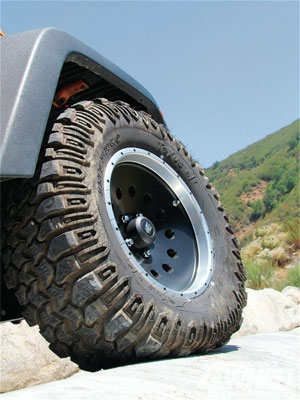This post contains affiliate links. If you click on a link and make a purchase, we may earn a commission at no additional cost to you.
When it comes to off-roading in your Jeep, conquering challenging terrains and navigating the great outdoors is an exhilarating experience. However, one often overlooked aspect of off-roading that can significantly impact your adventure is tire pressure. Proper tire pressure is crucial when you venture onto the trails, and understanding how to manage it can make all the difference in your off-road escapades. In this guide, we’ll explore why tire pressure matters, how to find the right balance, and some essential tips for hitting the trails with confidence.
Why Tire Pressure Matters Off-Road
Your Jeep’s tires are its direct connection to the ground, and their pressure affects various aspects of off-roading, including:
- Traction: Adjusting tire pressure can improve traction on different terrains. Lower pressure allows the tire to conform to uneven surfaces, providing better grip on rocks, sand, and mud.
- Ride Comfort: Lowering tire pressure can enhance ride comfort by absorbing shocks and vibrations, creating a smoother off-road experience.
- Tire Durability: Proper tire pressure helps prevent damage to your tires. Overinflated tires are more prone to punctures and sidewall damage on rough terrain.
- Fuel Efficiency: Maintaining the right tire pressure can improve fuel efficiency, helping you go farther on your adventures.
- Steering Control: Lowering tire pressure improves steering control and minimizes the risk of slipping or sliding on loose surfaces.
Finding the Right Tire Pressure
The optimal tire pressure for off-roading depends on various factors, including your Jeep’s weight, tire type, and the terrain you plan to tackle. Here’s a general process for finding the right tire pressure:
- Check Your Owner’s Manual: Start by checking your Jeep’s owner’s manual for recommended tire pressures. These figures are typically for on-road use, but they provide a baseline.
- Consider Terrain and Conditions: Adjust your tire pressure based on the terrain. For soft, sandy terrain, you’ll want to deflate your tires more than for rocky trails.
- Trial and Error: It may take some trial and error to find the ideal tire pressure for your specific off-road conditions. Start with a slightly lower pressure than recommended and adjust as needed.
- Invest in a Good Pressure Gauge: An accurate tire pressure gauge is an essential tool for off-roading. Make sure you have one on hand to fine-tune your tire pressure.
Tips for Off-Roading with the Right Tire Pressure
- Carry a Compressor: Invest in a portable air compressor. It allows you to adjust tire pressure on the go and reinflate tires before returning to the pavement.
- Check Tire Pressure Frequently: Tire pressure can change as you drive and with temperature fluctuations. Periodically check and adjust it during your off-road journey.
- Don’t Overdeflate: While lower tire pressure can be beneficial, avoid going too low, as it can lead to rim damage and decreased stability.
- Be Mindful of Speed: Reduced tire pressure affects your Jeep’s handling and braking. Adjust your driving style accordingly when off-roading with lower tire pressure.
Proper tire pressure management is a critical aspect of off-roading in your Jeep. By understanding the importance of tire pressure, finding the right balance, and following these essential tips, you can confidently tackle the trails and make the most of your off-road experience. So, the next time you hit the trails in your Jeep, remember that tire pressure isn’t just a number—it’s the key to unlocking your off-road potential.
This post contains affiliate links. If you click on a link and make a purchase, we may earn a commission at no additional cost to you.

























